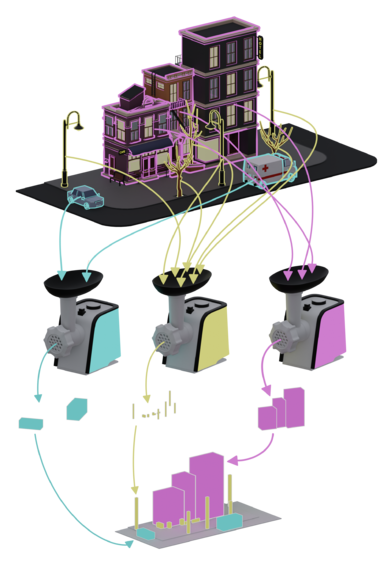SRNT
Hypothesis #3: Gativus Subjective Reality Network (SRNT)
Gativus hypothesizes that in order to achieve adaptive capabilities, evolution had built an organ to replicate external environment of the organism into a local copy - subjective reality (SURE). It consist of two major parts: (1) an objective map of the external environment objects and its events; and (2) operational network to manage the objective map (create and amend map's objects).
1) Objective map (OMAP) - is a network consisting of objects which can be recognized in the external environment and activities happened with those objects. While the activities would be different from the time: event - completed activity; current activity; planned/targeted activity. The objects of the OMAP (network nodes) can be interconnected with two types of relations: (1) Participation relation; and (2) Consequence relation between activities.
2) Operation Network (OPNT) - is a set of modules providing creation and amendment of the OMAP,
As soon as both components of the Mind-Body problem are networks, they can be represented as set of nodes and their relations. Gativus defines node as identified entity with unique name and numerous components gathered into groups by their distinctive properties, such as value storage, activity, etc. Every component may have a connection points for establishing relations, which are specific for each group of components. Gativus node notation is described in Gativus Notation (GNOT).
Gativus is based on Axiom#1 that both networks have physical interconnection, what means that there are relations between knowledge entities and neuron level cells.
